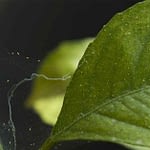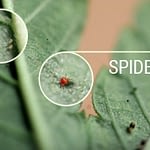Spider mites are plant-eating mites that appear as if tiny spiders. In cool climates, they spend the winter resting in soil, while in warmer regions, they live and feed year round.1 Most active in dry, hot conditions, spider mites use their needle-like mouth parts to prey on fluid extracted from individual plant cells. While they do not bite humans or pets, these relatives of spiders and ticks can harm indoor and outdoor plants. In this article you will get to know about spiders and its prevention from damages to your park and others. You can contact spider pest control services for such.

Because spider mites are pests to over 180 sorts of plants,1 gardeners and indoor plant enthusiasts are likely to encounter them sooner or later. Landscape plants, fruits, vegetables and herbs are vulnerable to spider mites.
When present within the garden, lacewing larvae, adult ladybugs and other sorts of predatory insects can help control smaller mite populations.2 Houseplants, also as hydroponic plants (plants grown indoors in water, not soil),3 are susceptible to spider mites because there’s usually low humidity inside a home. Whether the matter is indoors or out, recognizing the first signs of spider mites can prevent infestations and keep your plants healthy.
Spider mites are so small that you simply need a hand glass to ascertain them clearly. At but 1/20 inch long,4 female mites are larger than the males. To the eye , they appear like tiny moving dots, but the webs that spider mites spin are much easier to ascertain . These webs distinguish spider mites from other sort of mites and other microscopic pests, like thrips and aphids, which will infest plants.4 When webs are noticed and tiny holes are visible within the foliage of plants,2 spider mites are present and feeding.
Before bringing houseplants inside for the winter, and before planting landscape plants, carefully check stems and leaves for webs and appearance at the undersides of leaves for mites. Check hydroponic and indoor plants a minimum of once a month for signs of spider mites.
Managing Spider Mites
While beneficial insects can help control spider mites, mite populations large enough to make visible plant damage require immediate attention. For infestations of spider mites on outdoor plants, use Worry Free Brand Insecticide and Miticide able to Use Dust. This product recommended to be used on all kinds of plants; on edibles, it is often spent to the day of harvest. For decorative plants and hydroponics kept indoors, take plants outside to treat with Worry Free Brand Insecticide and Miticide able to Use Spray. Spray the tops and bottoms of leaves and permit the merchandise to dry before bringing plants back inside. Both products are naturally derived from chrysanthemum flowers and are effective on 250 sorts of insects.
Dealing with tetranychid Damage

Plants with mite damage to only a couple of leaves will recover quickly and without special care, but those with more significant damage will become stressed and need extra attention. confirm that each one plants get the required amount of sunlight for the variability . Keep soil moist, but not soggy, and feed plants a quick-release fertilizer, like Alaska® Fish Fertilizer 5-1-1, which provides plants an instantaneous nutrient boost. Until the plant starts producing new, healthy leaves, avoid transplanting or making any major changes to the plant environment.
The earlier you discover spider mites on your plants, the more quickly the matter is often resolved. With the assistance of Worry Free Brand Insecticide and Miticide dust or spray, even large infestations are often managed.
Worry-Free and Alaska are registered trademarks of Central Garden & Pet Company.
Also Read:
Monster Musume Season 2 – Release Date
Showbox Alternative – The Best Sites

Be First to Comment